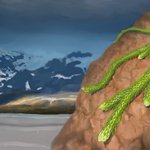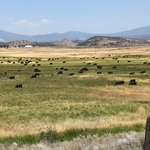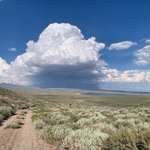Climate Change and the Environment
Drawing on our expertise in environmental sciences and through our transnational partnerships, A&S faculty and students are driving new solutions to extreme weather events, food insecurity and public health crises. We also work to translate the science into actionable knowledge and practical policies to support resiliency and adaptation locally and around the globe.
Related News Stories

(Dec. 23, 2022)
Nature-Inspired Designs Could Offer Solutions for Global ChallengesSyracuse physics professor is leading an effort to translate research into real-world applications.

(Dec. 21, 2022)
Researchers Reject 30-year-old Paradigm: The Emergence of Forests Did Not Reduce the Amount of Carbon Dioxide in the AtmosphereAccording to new research from a team of earth scientists including EES Professor Christopher Junium, smaller plants may have reduced carbon dioxide levels on Earth before the evolution of large forests.

(Nov. 18, 2022)
Helping Ranchers Learn from the WildA new USDA grant funds Mark Ritchie’s research exploring how more ranchers could raise climate-friendly beef.

(Nov. 10, 2022)
Using Monsoons of the Past to Predict Climate Conditions of the FutureA team of researchers used ancient climate data to predict how the summer monsoon may change in the North American southwest.

(Oct. 28, 2022)
Advancing Artificial Enzyme EngineeringA research team including chemists from Syracuse University create the fastest artificial enzyme ever reported thanks to a novel method of locating an enzyme’s “sweet spot.”

(Oct. 26, 2022)
A&S Geochemist Receives NSF Grant for Work in Developing Search Engines for Climate Change DataAssistant Professor Tao Wen heads the low-temperature geochemistry team in a collaborative effort with Syracuse, the NCSA, and five other institutions, with the goal of improving the discoverability of scientific data.

(May 26, 2022)
Hidden in Plain Sight: A&S Biologists Say Southern Right Whale Habitat Choice is Key to Keeping Young Calves SafeWhale mothers choose nursery sites in shallow waters where predators cannot “eavesdrop” on communication between a mother and her young.
